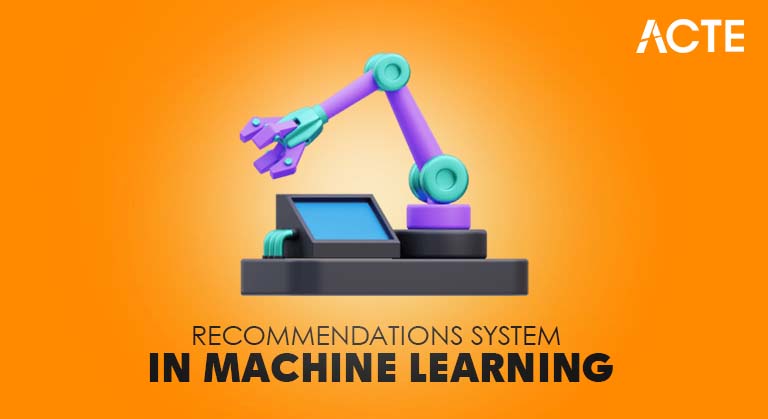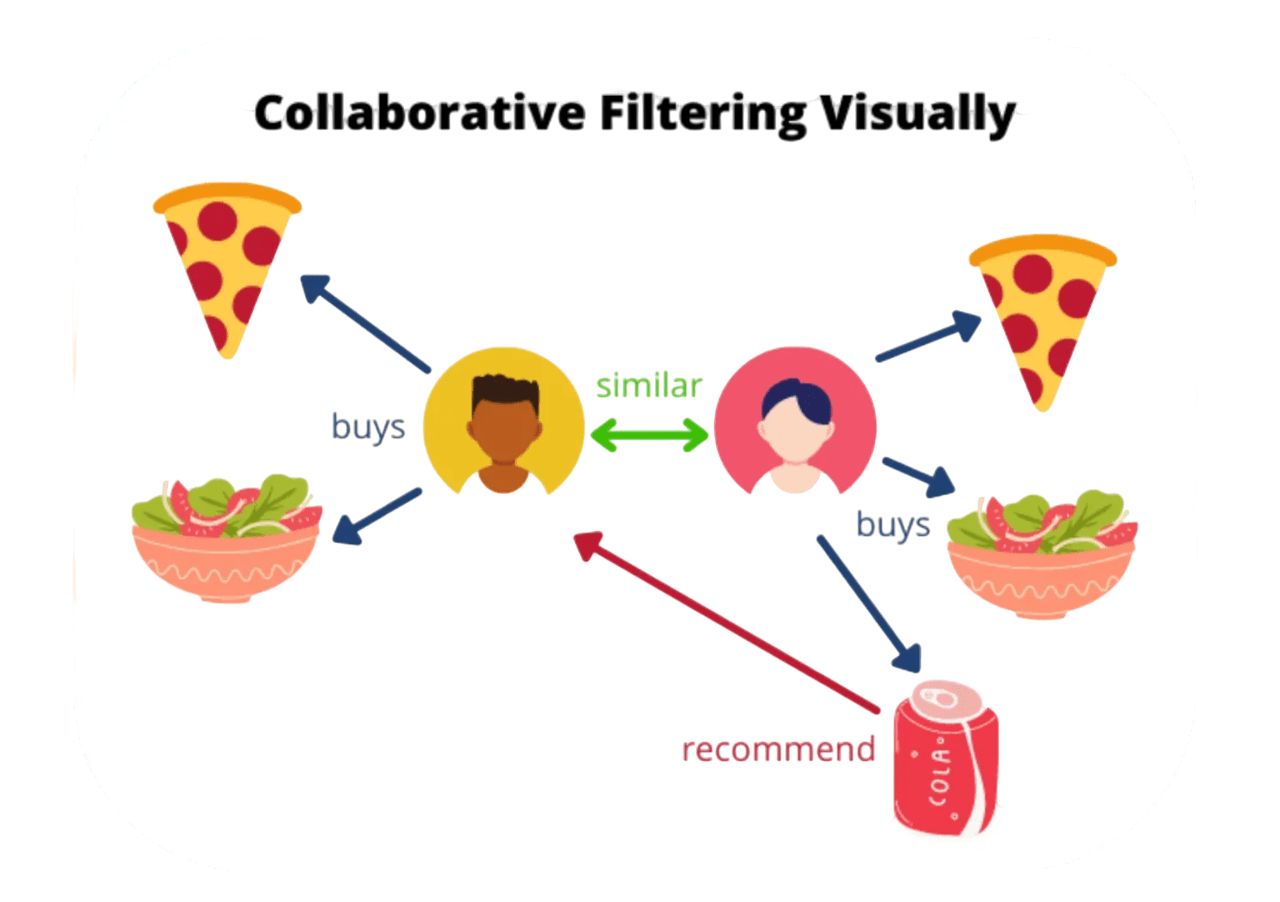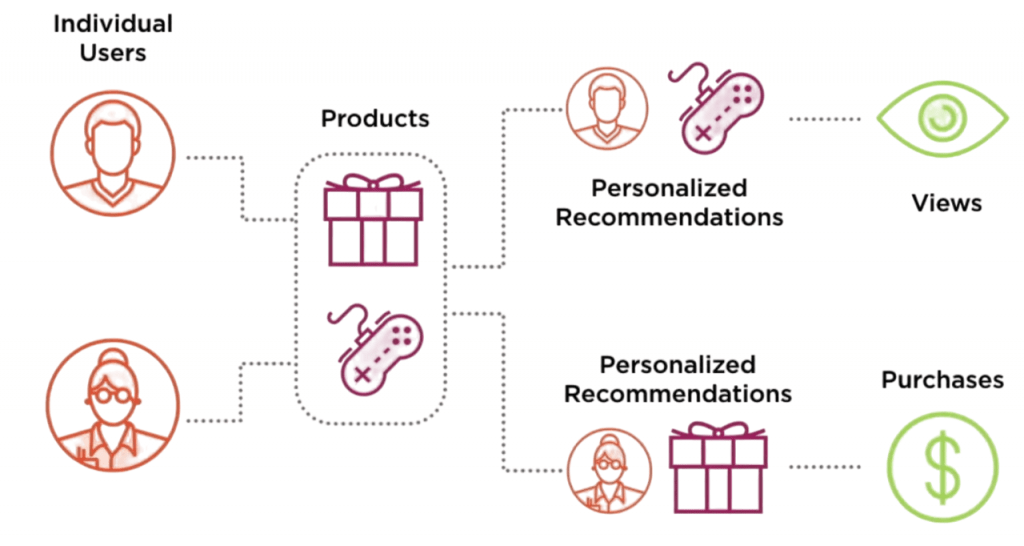
- Introduction to Recommendation Systems in ML
- Collaborative Filtering
- Content Based Filtering
- Hybrid Methods
- Similarity Metrics (Cosine, Pearson)
- Cold Start Problem
- Real-Time Recommendation Engines
- Tools and Libraries (Surprise, LightFM)
- Business Applications (Netflix, Amazon)
- Conclusion
Introduction to Recommendation Systems in ML
Recommendation systems are powerful tools that guide users toward content, products, or information they are likely to find valuable. These systems are an essential part of the digital landscape, used extensively by platforms like Amazon, Netflix, Spotify, and YouTube. By analyzing large datasets of user behavior and item characteristics, Recommendation Systems in ML offer personalized experiences, enhance user satisfaction, and increase engagement and sales. Machine Learning Training explores collaborative filtering, content-based methods, and hybrid approaches to build effective recommendation engines. Recommendation engines operate on various principles, and their effectiveness hinges on choosing the right approach depending on the nature of the data and the application. The major categories of recommendation algorithms include collaborative filtering, Content Based Filtering, and hybrid methods. Emerging approaches also leverage deep learning and real-time analytics to improve performance and scalability.
Ready to Get Certified in Machine Learning? Explore the Program Now Machine Learning Online Training Offered By ACTE Right Now!
Collaborative Filtering
Collaborative filtering (CF) is a widely used technique that relies on the assumption that users who agreed in the past will agree again in the future. CF recommends items to a user based on the preferences of similar users (user-user) or based on items that share similar feedback from users (item-item). Confusion Matrix in Machine Learning plays a key role in evaluating CF-based classifiers, helping quantify prediction accuracy and identify misclassifications across recommendation scenarios.
User-Based Collaborative Filtering
This method identifies a group of users whose preferences are similar to the active user and recommends items they liked. The similarity is computed using metrics such as cosine similarity or Pearson correlation. For instance, if User A and User B have both liked items 1, 2, and 3, and User A also liked item 4, then item 4 may be recommended to User B.

Item-Based Collaborative Filtering
Instead of finding similar users, this method looks for items similar to what the user has liked in the past. If item A and item B receive similar ratings from many users, then item B can be recommended to a user who liked item A. Item-based CF is typically more scalable than user-based CF.
Content Based Filtering
Content Based Filtering recommends items that are similar to those a user has previously liked, based on metadata or attributes of the items. For instance, if a user enjoys science fiction movies, the system will recommend other movies within the same genre or those with similar themes, actors, or directors. This method constructs a user profile based on the features of items the user has interacted with. The system then compares new items with this profile to determine relevancy. One advantage of Content Based Filtering is that it does not require data from other users, making it effective in cold-start situations for new users.

Hybrid Methods
Hybrid recommendation systems integrate collaborative and content-based filtering approaches to overcome the limitations of each. They aim to improve recommendation accuracy and robustness.
Types of Hybrid Systems:
- Weighted Hybrid: Combines the predictions of multiple recommendation systems using a weighted sum.
- Switching Hybrid: Chooses between different recommenders based on the situation or confidence level.
- Feature Combination: Merges item or user features from multiple sources into a single recommendation model.
- Mixed Hybrid: Simultaneously presents recommendations from different algorithms.
Netflix and Amazon use hybrid systems to provide highly personalized and context-aware recommendations.
To Explore Machine Learning in Depth, Check Out Our Comprehensive Machine Learning Online Training To Gain Insights From Our Experts!
Similarity Metrics (Cosine, Pearson)
In recommendation systems, similarity metrics are crucial for finding and connecting users or items with shared traits. These metrics create the basic framework for collaborative filtering techniques, which power advanced recommendation algorithms. Various methods exist, such as Cosine Similarity, which measures the angle between vectors in high-dimensional spaces, Pearson Correlation, which assesses linear relationships while considering mean differences, and Jaccard Similarity, which works well for binary datasets like purchase histories. These similarity metrics often support ensemble techniques like Bagging vs Boosting, where Bagging reduces variance through parallel model training, and Boosting reduces bias via sequential learning. Choosing the right similarity metric can significantly affect the effectiveness and accuracy of recommendation systems. This makes it an important factor for data scientists and machine learning engineers who want to create strong and reliable predictive models.
Cold Start Problem
In the area of recommendation systems, a key challenge called the cold start problem significantly affects how well personalized suggestions work. TThis issue appears in three main situations: the new user problem, where there’s no previous interaction data; the new item problem, where there isn’t enough user feedback for new content; and the new system problem, which happens when a recently launched platform lacks historical data for insights. Machine Learning Training addresses these cold-start challenges with strategies like metadata enrichment, transfer learning, and hybrid recommendation models. To tackle these challenges, developers have come up with various solutions, including content-based methods, using demographic data, and engaging users by asking for initial ratings during sign-up. Hybrid approaches have proven especially effective in easing the cold start problem. They allow recommendation systems to offer useful suggestions even without a lot of user interaction data.
Looking to Master Machine Learning? Discover the Machine Learning Expert Masters Program Training Course Available at ACTE Now!
Real-Time Recommendation Engines
In modern applications, recommendations must be updated in real-time as user behavior changes. This requires systems that are fast, responsive, and scalable. One approach to achieving this is through the Support Vector Machine (SVM) Algorithm, which excels at classification tasks by finding optimal hyperplanes that separate user behavior patterns. SVM’s robustness to outliers and ability to handle high-dimensional data make it suitable for dynamic recommendation environments.
Techniques for Real-Time Engines:
- Session-Based Recommendations: Focus on the user’s current session without requiring a user profile.
- Streaming Algorithms: Use Apache Kafka, Flink, or Spark Streaming to process data on the fly.
- Online Learning Models: Continuously update the model as new data arrives.
- Caching and Approximate Methods: Improve latency by caching frequent results or using approximate nearest neighbor searches.
Real-time recommendation systems are essential for applications like e-commerce and online news where content relevance changes rapidly.
Tools and Libraries (Surprise, LightFM)
In the fast-changing world of recommendation systems, developers and data scientists can tap into a strong set of open-source libraries that make development and evaluation easier. Surprise provides a Python-based solution focused on collaborative filtering, and it supports techniques like SVD and KNN along with thorough evaluation metrics.LightFM offers innovative hybrid methods by blending matrix factorization with Content Based Filtering. Implicit gives an efficient way to handle datasets with implicit feedback using algorithms like Alternating Least Squares (ALS). These systems can be further enhanced using Decision Trees in Machine Learning, which support classification and regression tasks by recursively splitting data based on feature values. Decision Trees provide interpretable logic paths that can complement hybrid models in personalized recommendation pipelines. For those interested in deep learning, TensorFlow Recommenders (TFRS) provides a scalable platform for creating advanced recommendation models. RecBole serves as a research-focused framework that supports modern methods and a variety of datasets. These powerful tools simplify the challenges of designing and implementing recommendation systems, allowing practitioners to quickly test and launch intelligent, personalized recommendation engines in various real-world applications.
Preparing for Machine Learning Job Interviews? Have a Look at Our Blog on Machine Learning Interview Questions and Answers To Ace Your Interview!
Business Applications (Netflix, Amazon)
Recommendation systems are a core driver of revenue and user engagement across industries:
- Netflix: Uses hybrid models combining collaborative filtering and deep learning for personalized movie and TV show suggestions.
- Amazon: Employs item-based collaborative filtering and real-time recommendations based on browsing history and purchase behavior.
- Spotify: Leverages matrix factorization and deep learning for personalized playlist generation.
- YouTube: Uses deep neural networks and transformers for video recommendations.
- LinkedIn: Uses content and behavior-based filters for job and connection recommendations.
- E-commerce and Retail: Increases cross-selling and upselling by recommending products.
Well-implemented recommendation systems contribute to better conversion rates, customer satisfaction, and long-term loyalty.
Conclusion
Recommendation Systems in ML are a vital component of intelligent digital platforms. They help users navigate overwhelming amounts of information and enhance user experience through personalization. From collaborative filtering and content-based approaches to hybrid methods and deep learning, the landscape of recommendation algorithms is vast and evolving. Machine Learning Training provides hands-on insights into building scalable recommendation systems using traditional techniques and modern neural architectures. As datasets become larger and more complex, and user expectations for relevance and immediacy grow, Recommendation Systems in ML will continue to innovate. Real-time engines, context-aware recommendations, and explainable AI will shape the future of this field. For data scientists, engineers, and product managers, understanding the principles and practices of building robust recommender systems is essential for success in today’s data-driven world.



